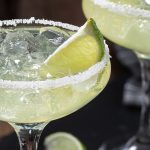
Kali Puja
Kali Puja is a holiday that celebrates the goddess Kali on the new moon of the month of Kartik, which is usually around October or November on the Gregorian calendar. It is also a holiday that coincides with the Lakshmi Puja day of Diwali. While many people in Nepal and India worship Diwali on this day, the Assamese, Bengalis, and Odias worship the Goddess Kali.
History of Kali Puja
While many festivals in India and Nepal date back to ancient times, the same cannot be said of Kali Puja. During the 18th century, it was introduced to Bengal by Raja Krishnachandra of Navadvipa. From that point on, and throughout the 19th century, this holiday continued to grow in popularity. Now, it is a holiday that rivals Durga Puja in size and enthusiasm in Assam and Bengal.
Kali is a goddess who is most often seen as a slayer of the forces of evil. In one of her most famous legends, Durga wounds the demon Raktabija with a variety of weapons in an attempt to destroy him. However, she soon realizes that she has not made the situation better but worse. That’s because with every drop of blood she spilled, a fully-grown version of Raktabija formed from it. In fact, there were so many that the battlefield was literally filled with clones of this demon. However, just as things began to look bleak, Kali suddenly burst forth from Durga’s forehead, armed with both a sword and a noose. Kali then proceeded to slay all of the demon clones and, when she was done, danced on the corpses.
Kali Puja Customs & Celebrations
On Kali Puja, many devotees of Kali honor this goddess by decorating their homes and setting up shrines to her. During the evening hours, she is worshiped using mantras and Tantric rites and is offered red hibiscus flowers and various food offerings, which may include lentils, rice, meat, and fish. Sometimes, devotees ritually sacrifice animals on this day and offer them to the goddess, although that practice has begun to diminish in recent years.
Across the country, temples and shrines display one of the most prevalent images of the Goddess Kali. She is shown with a garland composed solely of the heads of all the demons she has slain over the millennia and with one of her feet on the chest of Lord Shiva, holding him down. She is often also portrayed with a sword in one hand and a noose in the other. As people do in their homes, they often leave offerings of sweetmeats, rice, lentils, and red hibiscus flowers at these images.








